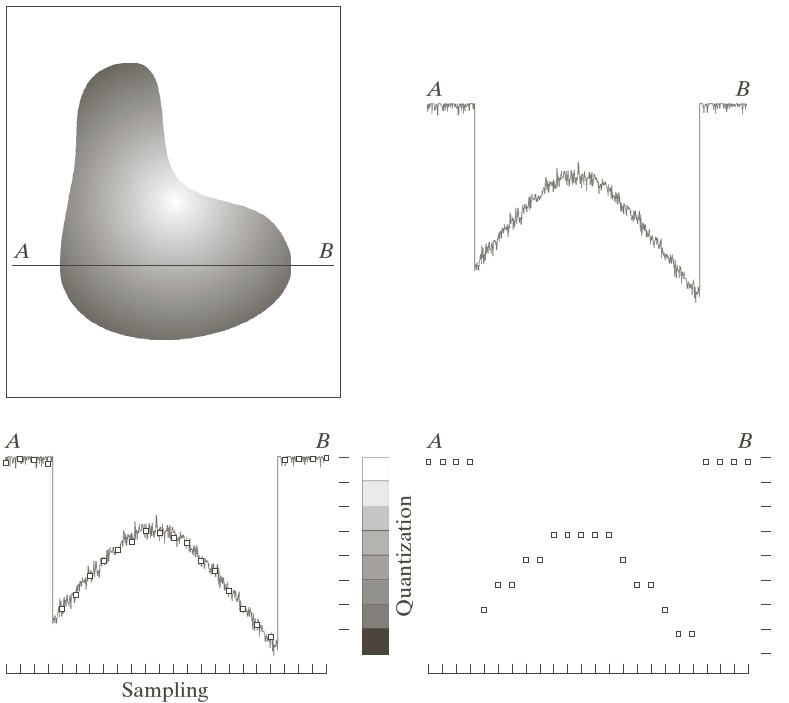An image is a function: $f(x,y)$
"Sampling" is digitization in the domain $(x,y)$
"Quantization" is digitization in the range, $f$.

[Gonzales and Woods figures 2.16, 2.17]
The ranges of $f$, $x$, and $y$ are typically powers of 2:
- e.g. 12 bits per pixel greyscale is 0...$2^{12}$-1, or 0...4095
- e.g. 8 bits per pixel RGB is (0...255 red, 0...255 green, 0...255 blue)
Note: pixel values typically range in [0...255], but it's better to consider them as real values in [0...1]
"Dynamic range" is the ratio between the maximum measurable radiance and the minimum detectable radiance
- max occurs at sensor saturation
- min occurs when noise overwhelms the sensor
"Contrast" is the difference between the maximum and minimum radiances
"Intensity" is a measure of the brightness of light. It's really called radiance and defined as follows:
"Flux" is power, measured in Watts ($W$) and approximately proportional to photons per second.
"Flux density" is power of photon crossing a particular
surface, measured in Watts per square meter ($W / m^2$).
An angle in 2D is the length of the circumference of a unit
circle subtended by the angle, and is measured in radians.
Similarly, a "solid angle" in 3D is the area of the surface
of a unit sphere subtended by the solid angle, and is
measured in "sterradians".
"Radiance" is flux density of photons crossing a particular
surface, lying within a particular solid angle, measured in
Watts per square meter per steradian ($W / m^2 / sr$).
Radiance is a radiometric quantity that describes energy along
a ray.
The corresponding photometric quantity is the "nit",
measured in lumens per square meter per steradian, and describes
the energy perceived by the eye. This perceived energy
depends upon the spectral response of the eye, which varies with
wavelength.
More details on units of illumination in case you're interested.
